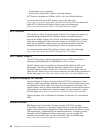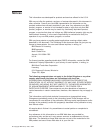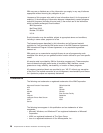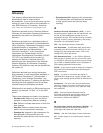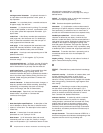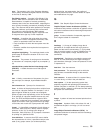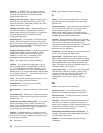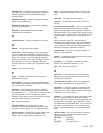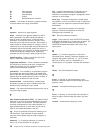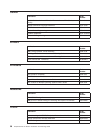C
carriage control character. An optional character in
an input data record that specifies a write, space, or
skip operation.
cassette. In a cut-sheet printer, a movable enclosure
for paper supply. See also bin.
character. (1) A symbol used in printing. For example,
a letter of the alphabet, a numeral, a punctuation mark,
or any other symbol that represents information. (2) A
byte of data.
coded font. A font library member that associates a
code page and a font character set. For double-byte
fonts, a coded font associates more than one pair of
code pages and font character sets.
code page. A font component that associates code
points with character identifiers. A code page also
identifies how undefined code points are handled.
code point. A one-byte code representing one of 256
potential characters.
concatenate. (1) To link together. (2) To join two
character strings.
concatenated data set. In iSeries, a group of logically
connected data sets that are treated as a single data
set for the duration of a job step. See also data set.
continuous forms. A series of connected forms that
feed continuously through a printing device. The
connection between the forms is perforated to enable a
user to tear them apart. Before printing, the forms are
stacked, folded along the perforations. Contrast with
cut-sheet paper.
control character. A character that starts, changes, or
stops any operation that affects recording, processing,
transmitting, or interpreting data (such as carriage
return, font change, and end of transmission).
cut-sheet paper. Paper that is cut into separate
sheets before it is printed on. Contrast with
continuous-forms paper.
D
data description specifications. A description of the
user’s database or device files that is entered into the
system in a fixed form. The description is then used to
create files.
data set. A named set of records stored and
processed as a unit. Synonym for file.
data stream. (1) All information (data and control
commands) sent over a data link, usually in a single
read or write operation. (2) A continuous stream of data
elements being transmitted, or intended for
transmission, in character or binary-digit form, using a
defined format.
default. An attribute, value, or option that is assumed
when none is explicitly specified. (I)
DDS. See data description specifications
document. (1) A publication or other written material
pertaining to a specific subject or related subjects. (2) In
word processing, a collection of one or more lines of
text that can be named and stored as a separate entity.
double-byte coded font. A font in which each
character is defined by two bytes, of which the first
defines a coded font section, and the second defines a
code point in that section. Double-byte coded fonts are
needed for the support of languages requiring more
than 256 graphic characters; two bytes are required to
identify each graphic character. Kanji is printed by using
a double-byte font. Contrast with single-byte coded font.
download. To transfer data from a processing unit to
an attached device such as a microcomputer for
processing.
duplex printing. Printing on both sides of a sheet of
paper. Contrast with simplex printing.
E
EBCDIC. Extended binary-coded decimal interchange
code.
electronic overlay. A collection of constant data, such
as lines, shading, text, boxes, or logos, that is
electronically composed in the host processor and
stored in a library, and that can be merged with variable
data during printing. Contrast with page segment. See
also overlay.
enabled. (1) Pertaining to a state of the processing
unit that allows certain types of interruption. (2) A
condition of the printer (physically selected) in which the
printer is available to the host processor for normal
work. Contrast with disabled mechanism.
end-user interface. A method by which a customer
can obtain the services of a product, for example,
coding samples, commands and command lists. Every
product does not have an end-user interface; some
products provide their services through programming
interfaces, some provide services through a command
line interface, and others provide their services only to
other products.
escape character. The control character X'2BD3' in a
text-control sequence that indicates the beginning of the
sequence and the end of any preceding text.
32 Infoprint Server for iSeries: Introduction and Planning Guide
|
|
|
|
|



